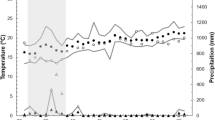Abstract
To test the female-advantage hypothesis that has been proposed to explain the adaptive significance of winter pair bonds in ducks, we examined the feeding and social behaviors of the northern pintail, Anas acuta. The female-advantage hypothesis assumes that male attendance offers paired females the benefits of increased social status and access to food, as well as less harassment from conspecifics, allowing them to spend more time feeding. Paired females dominated unpaired females, but neither time budgets of feeding nor frequency of feeding was significantly different between unpaired and paired females. The female-advantage hypothesis predicts that paired males spend less time feeding because they must closely guard their partners from harassment by male conspecifics. Paired males defended their mates by chasing and pecking the unpaired males. However, both time budgets of feeding and frequency of feeding were significantly higher in paired males than in unpaired males. Unpaired males frequently approached females while swimming. They performed courtship displays, mostly toward unpaired females. Paired males spent more time feeding by saving time and energy in courtship. We consider that the advantage of winter pairing for males comes from having a mate plus having an increase in feeding frequency.
Similar content being viewed by others
Author information
Authors and Affiliations
Additional information
Received: February 20, 2000 / Accepted: May 22, 2000
About this article
Cite this article
Nakamura, M., Atsumi, T. Adaptive significance of winter pair bond in male pintail, Anas acuta . J Ethol 18, 127–131 (2000). https://doi.org/10.1007/s101640070012
Issue Date:
DOI: https://doi.org/10.1007/s101640070012




